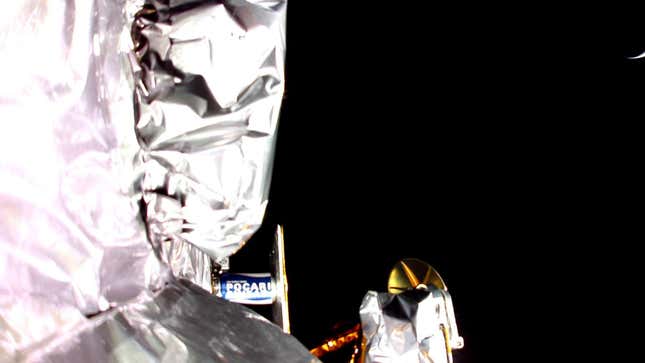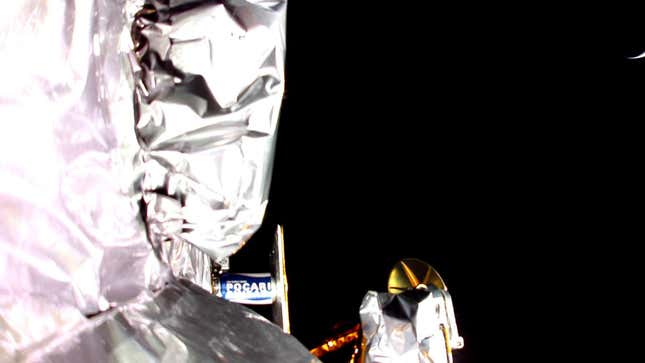
Tragically, Astrobotic’s lander will not be able to pull off a soft landing on the lunar surface. However, Peregrine continues on its trajectory to the Moon, and as a small consolation, its onboard payloads have successfully powered on.
In a series of updates shared on X, Astrobotic announced that it successfully powered up 10 payloads on board Peregrine and received data from all nine payloads designed to communicate with the lander.
The instruments that have turned on so far include a swarm of five tiny robots from Mexico’s space agency, the German-built M-42 radiation detector, and Astrobotic’s own Optical Precision Autonomous Landing sensor. Carnegie Mellon University’s Iris lunar rover also successfully powered up and sent a message from space: “Hello, Earth!”
Four payloads belonging to NASA have also powered on: NSS (Neutron Spectrometer System), LETS (Linear Energy Transfer Spectrometer), PITMS (Peregrine Ion Trap Mass Spectrometer), and NIRVSS (Near Infrared Volatile Spectrometer System). Encouragingly, two of the payloads, NSS and LETS, have started measuring different components of the radiation environment in interplanetary space around the Earth and the Moon, NASA wrote in a blog post.

The German-built M-42 radiation detector is also designed to measure and analyze the levels of cosmic radiation during its journey to the Moon to assess the safety and feasibility of future human lunar missions. It’s also designed to transmit its data back to Earth, but we’re still waiting for confirmation on whether M-42 has managed to do so.
Peregrine launched on Monday on board United Launch Alliance’s Vulcan Centaur rocket. The The 2,829-pound (1,283-kilogram) spacecraft powered on and even made contact through NASA’s Deep Space Network, but Peregrine’s journey to the Moon started falling apart shortly after. The lander began to lose propellant at a critical rate, prompting Astrobotic to give up on any chance of its lunar lander touching down on the Moon. The company believes a faulty valve was the cause behind Peregrine’s anomaly.
Despite leaking propellant, the lander has been operational for nearly four days now. Astrobotic has been updating the life expectancy of Peregrine almost every day because of an unexpectedly slower rate at which its propellant has been leaking into space, likely due to a decrease in pressure. In the latest update on Wednesday, Astrobotic gave Peregrine 48 more hours to live.
The lander is currently at around 225,000 miles (362,100 kilometers) away from Earth and continuing on its normal trajectory en route to the Moon. During this time, Astrobotic and its payload providers are collecting valuable data that will feed into upcoming missions.
“Measurements and operations of the NASA-provided science instruments on board will provide valuable experience, technical knowledge, and scientific data to future CLPS lunar deliveries,” Joel Kearns, deputy associate administrator for exploration with NASA’s Science Mission Directorate, said in a statement.
Related article: Peregrine’s Failure Won’t Derail NASA’s Outsourced Space Dreams
Astrobotic was hoping to become the first commercial company to land on the Moon, and it is disappointing that we won’t get to see Peregrine touch down on the lunar surface. Still, the spacecraft’s perseverance thus far is providing some valuable data for Astrobotic and other companies involved in the mission, demonstrating that their machines are capable of working in space.
For more spaceflight in your life, follow us on X (formerly Twitter) and bookmark Gizmodo’s dedicated Spaceflight page.






